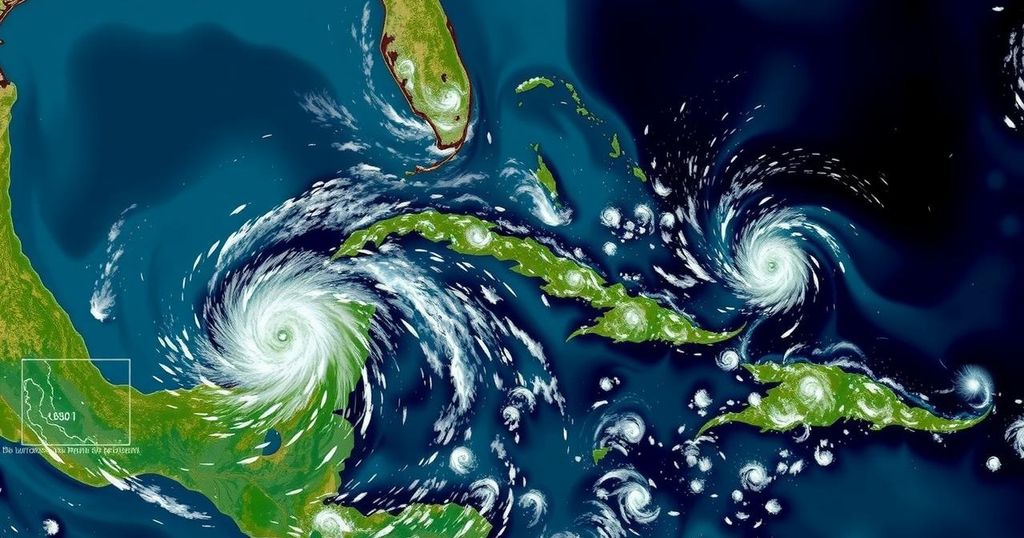Hurricane Rafael: Current Status and Forecasts in the Gulf of Mexico

Hurricane Rafael has intensified to a Category 3 storm in the Gulf of Mexico. It is following an unusual path and is expected to weaken without making landfall. A nearby Tropical Disturbance is less concerning, with potential impact on South Florida. A cold front may halt further tropical activity later next week.
Hurricane Rafael has unexpectedly intensified and is currently categorized as a Category 3 hurricane as it traverses the Gulf of Mexico. Notably, it is following an unusual east-to-west trajectory, a path only previously recorded by Hurricane Jeanne in 1980. Rafael is projected to weaken over the weekend due to adverse dry air and upper wind conditions. Predictions from the National Hurricane Center indicate that the hurricane will likely dissipate without making landfall, as it loops back in the western and central Gulf. Although the hurricane poses risks to marine conditions, it is anticipated that land areas will experience minimal impact. In addition to Hurricane Rafael, a Tropical Disturbance near Puerto Rico is progressing through the islands with a slight potential of developing into a tropical depression. This system is expected to impact South Florida with a moisture surge from Sunday into Monday, although it is not viewed with concern. Moreover, a strong cold front is forecasted to arrive in South Florida by the end of next week, which should effectively halt tropical activity in the region for the remainder of the hurricane season.
The Atlantic hurricane season, which extends from June to November, brings significant concerns for coastal regions in the United States. Hurricanes can vary immensely in strength, path, and impact, making the prediction of their behavior crucial for safety. Hurricane Rafael’s unusual track and intensification are notable as they mark a deviation from typical storm patterns observed in the Gulf of Mexico. This region is prone to tropical storms and hurricanes that can bring heavy rains and dangerous winds. Meteorological bodies, like the National Hurricane Center, provide continuous updates and guidance on storm systems to assist in preparedness and safety.
In summary, Hurricane Rafael has intensified unexpectedly while moving through the Gulf of Mexico, yet forecasts suggest it will weaken and likely dissipate without making landfall. Furthermore, a nearby Tropical Disturbance is tracking toward South Florida with little concern. Observations indicate that a strong cold front will subsequently inhibit further tropical activity in the region. As always, the safety of coastal communities remains a priority amid these natural phenomena.
Original Source: www.foxweather.com







